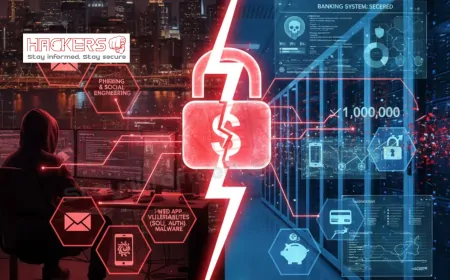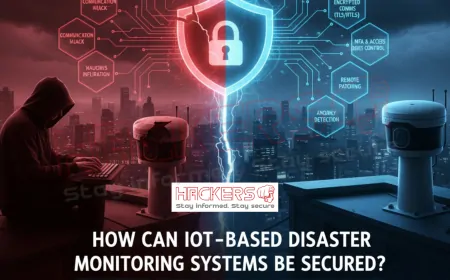Why Would Hackers Want Access to Refinery and Pipeline Systems?
Imagine waking up to empty petrol pumps. No fuel for your car. No diesel for trucks. No jet fuel for planes. Factories stop. Hospitals run on generators. Prices skyrocket. All because a hacker, sitting thousands of miles away, quietly took control of a refinery or pipeline. This is not a movie plot. In 2021, the Colonial Pipeline in the U.S. was hacked. Fuel lines stretched for miles. Panic buying emptied stations. In 2022, Oil India’s systems were locked by ransomware. In 2023, a cyberattack on a major Iranian refinery forced manual operations. These are not accidents. They are deliberate. Hackers do not want your email password. They want the keys to the systems that move oil from deep underground to your fuel tank. Refineries turn crude into petrol. Pipelines carry it across countries. One breach can halt nations. In this blog post, we will explore why hackers are obsessed with these systems. We will uncover their motives: money, chaos, sabotage, and power. We will show how they get in and what happens if they succeed. Most importantly, we will reveal how the industry is fighting back. Because when hackers target refineries and pipelines, they are not just stealing data. They are holding the world’s energy hostage.

Table of Contents
- What Are Refineries and Pipelines?
- The Control Systems: SCADA, PLC, and DCS
- The Motives: Money, Sabotage, and Geopolitics
- Entry Points: How Hackers Break In
- Real-World Attacks on Refineries and Pipelines
- Physical Risks: Explosions, Spills, and Safety
- Economic Impact: Billions Lost in Hours
- Supply Chain and Vendor Weaknesses
- IoT and Smart Pipelines: New Doors for Hackers
- Why India’s Refineries and Pipelines Are Prime Targets
- How the Industry Defends These Systems
- Global and Indian Response to the Threat
- Hacker Threat Matrix for Refineries and Pipelines
- Conclusion
What Are Refineries and Pipelines?
Refineries are giant factories that turn crude oil into usable products:
- Petrol for cars
- Diesel for trucks
- Jet fuel for planes
- LPG for cooking
- Chemicals for plastics
Pipelines are the highways of oil. They carry crude from wells to refineries and finished fuel to cities. India has over 25,000 km of pipelines. HPCL, BPCL, and IOCL run major networks. A single pipeline like the Mumbai-Pune line moves 5 million liters daily. Refineries like Jamnagar (Reliance) process 1.2 million barrels per day. These are not simple machines. They run on complex digital systems. Hack one valve, and you control the flow.
The Control Systems: SCADA, PLC, and DCS
These systems are the brain and nerves of refineries and pipelines:
- SCADA (Supervisory Control and Data Acquisition): Monitors temperature, pressure, and flow from a control room
- PLC (Programmable Logic Controller): Small computers that open/close valves and pumps
- DCS (Distributed Control System): Manages entire refinery units like distillation towers
Older systems were isolated. Now, they connect to the internet for remote monitoring. This efficiency is a hacker’s dream. One login gives control over physical equipment.
The Motives: Money, Sabotage, and Geopolitics
Hackers have many reasons to target these systems:
- Ransom: Lock systems and demand Bitcoin. Colonial paid $4.4 million.
- Sabotage: Cause explosions or spills to damage reputation.
- Espionage: Steal refining technology or pipeline maps.
- Geopolitical Leverage: Shut down fuel during war or elections.
- Environmental Terrorism: Force oil spills to protest climate policies.
- Insider Trading: Disrupt supply to manipulate oil prices.
A state actor can cripple an enemy without firing a shot. A criminal can earn millions in a day.
Entry Points: How Hackers Break In
Refineries and pipelines have many weak spots:
- Phishing: Fake “maintenance alert” email to control room staff
- Unpatched Systems: 20-year-old SCADA software with known flaws
- Remote Access: Engineers log in from home with weak VPNs
- Vendor Backdoors: Maintenance firms with full system access
- USB Drives: Infected pen drive plugged into a PLC
- Default Passwords: “admin123” on pipeline sensors
Once inside IT, hackers “jump” to OT (operational technology) to control valves and pumps.
Real-World Attacks on Refineries and Pipelines
These incidents prove the danger:
- Colonial Pipeline (2021): DarkSide ransomware locked billing. Fuel chaos in U.S.
- Saudi Aramco Refinery (2017): TRITON malware tried to disable safety systems.
- Iranian Pipeline (2023): Cyberattack forced manual valve control.
- German Refinery (2022): Ransomware halted fuel delivery for 3 days.
- Indian Pipeline (2024): Phishing hit IOCL control room; contained quickly.
Many attacks are hidden. CISA says 70 percent of pipeline firms faced OT probes in 2024.
Physical Risks: Explosions, Spills, and Safety
A hacked system can cause real-world disasters:
- Overpressure: Open too many valves; pipeline bursts
- Wrong Mix: Add water to fuel; engines fail
- Safety Bypass: Disable alarms; gas leaks go unnoticed
- Spills: Open offshore valves; oil pollutes oceans
In 2017, TRITON aimed to cause a Saudi refinery explosion. It failed, but the intent was clear: physical harm.
Economic Impact: Billions Lost in Hours
One hour of downtime costs:
- Refinery: Rs. 50 to 100 crore
- Pipeline: Rs. 10 to 20 crore
A week-long shutdown can:
- Raise petrol prices by Rs. 5 to 10 per liter
- Delay 10,000 trucks daily
- Cause Rs. 5,000 crore in supply chain losses
Colonial’s 6-day halt cost the U.S. $10 billion. In India, a Jamnagar shutdown could spike LPG prices nationwide.
Supply Chain and Vendor Weaknesses
Refineries rely on hundreds of partners:
- Automation firms (Honeywell, Siemens)
- Maintenance contractors
- Cloud SCADA providers
One hacked vendor spreads malware. The 2020 SolarWinds attack showed how one update infects thousands. In oil, a compromised valve supplier can open backdoors to refineries.
IoT and Smart Pipelines: New Doors for Hackers
Modern pipelines use IoT for efficiency:
- Pressure sensors every 10 km
- Leak detection cameras
- Drone patrols with live feed
Many run on weak firmware. A hacked sensor can:
- Report false leaks, triggering shutdowns
- Hide real leaks until disaster
- Join a botnet for DDoS attacks
In 2024, Chinese hackers targeted Indian pipeline IoT in border areas.
Why India’s Refineries and Pipelines Are Prime Targets
India’s energy setup makes it vulnerable:
- 85 percent oil imported; domestic pipelines critical
- Legacy SCADA in Paradip, Mathura refineries
- Remote pipelines in Northeast, prone to sabotage
- Geopolitical rivals: China, Pakistan
- Rapid digitalization without matching security
NCIIPC now mandates OT cyber audits for all PSU refineries.
How the Industry Defends These Systems
Refineries and pipelines are hardening:
- Air-Gapping Critical OT: No internet for safety systems
- Zero-Trust Access: MFA for every login
- AI Anomaly Detection: Flags wrong valve openings
- Redundant Controls: Manual overrides in control rooms
- Cyber Drills: Simulate pipeline breaches monthly
- Vendor SBOM: List all software in devices
Reliance uses Siemens SPPA-T3000 for secure DCS. IOCL deployed Israeli OT firewalls in 2024.
Global and Indian Response to the Threat
India is acting fast:
- NCIIPC: OT security guidelines for refineries
- CERT-In: Weekly alerts on SCADA flaws
- MeitY: Mandatory penetration tests
- DPDP Act: Fines for OT data leaks
Globally:
- API 1164 for pipeline cybersecurity
- U.S. TSA mandates for pipeline operators
- ENISA OT security framework
Hacker Threat Matrix for Refineries and Pipelines
| Target | Attack Method | Goal | Defense |
|---|---|---|---|
| Refinery DCS | TRITON malware | Cause explosion | Air-gap, whitelisting |
| Pipeline SCADA | Ransomware | Ransom, disruption | Backups, segmentation |
| Vendor System | Supply chain attack | Backdoor entry | SBOM, audits |
| IoT Sensors | Firmware exploit | False data | Encryption, updates |
Conclusion
Refinery and pipeline systems are hacker goldmines. They control the flow of fuel that powers the world. One breach can cause explosions, spills, shortages, or billion-dollar losses. Hackers want in for ransom, sabotage, espionage, or geopolitical gain. Real attacks on Colonial, Saudi Aramco, and Indian pipelines show the threat is growing. Entry via phishing, old SCADA, vendors, or IoT is too easy. India’s import dependency and legacy systems heighten the risk. But the industry is fighting back with air-gapping, zero-trust, AI, and drills. NCIIPC, CERT-In, and global standards lead the defense. The message is clear: hackers want control, but resilience stops them. The next attack is coming. The question is whether our fuel lines will hold. For the billions who fill up daily, the answer must be yes.
What are refinery control systems?
SCADA, PLC, and DCS: digital brains running refineries and pipelines.
Why do hackers target pipelines?
For ransom, disruption, sabotage, or to manipulate fuel prices.
Can hackers cause a refinery explosion?
Yes. By bypassing safety systems or overpressuring units.
Was Colonial Pipeline hacked via SCADA?
No. Billing IT was hit, but OT could have been next.
What is OT in refineries?
Operational Technology: systems controlling physical processes.
Are Indian pipelines safe from hackers?
Improving, but legacy systems and remote locations are risks.
Can a hacked sensor shut down a pipeline?
Yes. By reporting false leaks or pressure issues.
What is a supply chain attack on refineries?
Hacking a vendor to gain access to the main system.
Do refineries pay ransoms?
Rarely. Most use backups and manual controls.
Can cyberattacks raise diesel prices?
Yes. Supply fears push crude and fuel costs up.
Who protects Indian refineries from cyber threats?
NCIIPC, CERT-In, and company OT security teams.
What is air-gapping in pipelines?
Keeping critical systems offline, no internet connection.
Are offshore pipelines vulnerable?
Yes. Satellite links and remote locations are hard to secure.
Can AI detect refinery hacks?
Yes. It spots unusual valve movements or login patterns.
What is NCIIPC’s role?
Protects critical infrastructure like refineries from cyber threats.
Why are old SCADA systems risky?
No patches, weak passwords, and no modern security.
Can hackers steal refining technology?
Yes. To sell to rivals or build their own plants.
Are smart pipelines more secure?
Not always. More IoT means more entry points if not secured.
Who hacked Saudi safety systems in 2017?
TRITON malware, likely state-sponsored.
Will hackers stop targeting refineries?
No. The rewards are too high. Defense must keep evolving.
What's Your Reaction?























































